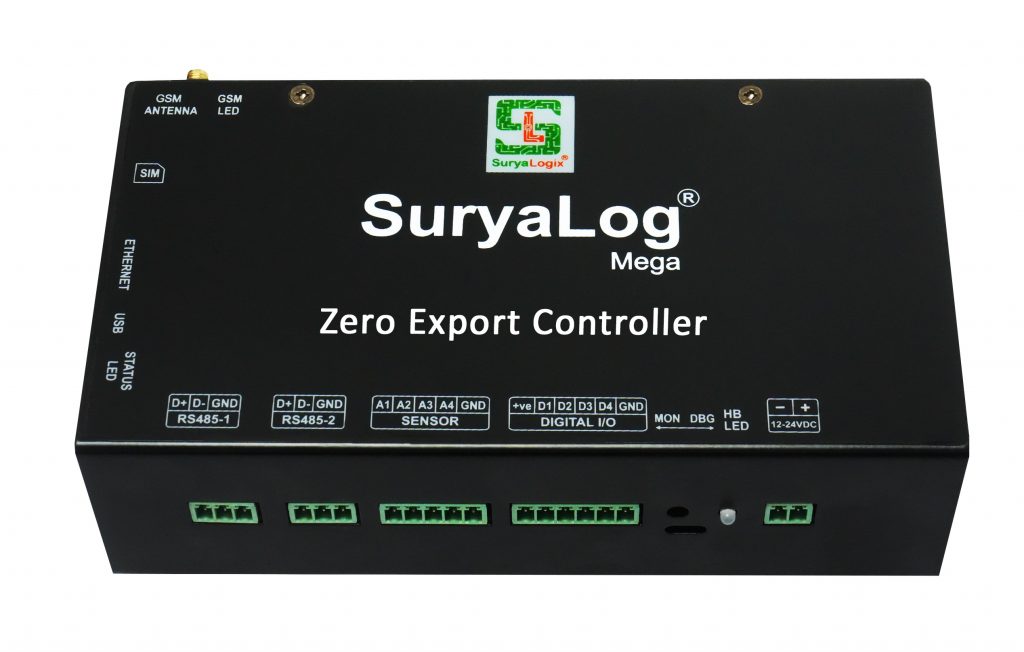Zero Export Controller/ Device
Prevent back feeding into the grid
What is Zero Export Controller/ Device
A Zero Export Controller ensures that no excess solar power is fed into the grid, directing all generated energy to local loads. It continuously monitors voltage and current, adjusting the inverter output to match or stay below the load demand.
In regions like India, where net metering approvals from DISCOM can take 6-8 months, a Zero Export Controller helps avoid unnecessary costs. When a unidirectional meter is installed, surplus energy generation leads to additional expenses. By implementing a Zero Export Controller, businesses and homeowners can maximize self-consumption, reduce energy wastage, and eliminate extra charges, ensuring an efficient solar energy management system.

Why choose SuryaLogix Zero Export Device/ Controller?
- To avoid back feeding into the grid till Net metering gets approved
- Beneficial when the load is less during break time or holidays
- Maximize the use of Green Energy
- Calculate the total load requirement by monitoring Grid Consumption and Solar generation
- Inbuild Storage & Extendable
- Capable to send data on multiple 3rd party portals through FTP & API
Specifications & Features
- Avoids back feeding into grid
- Monitor solar, grid & load parameters
- multiple grid compatibility
- Zero export controller and Data logger inbuilt
The controller is designed to prevent the back feeding of excess solar energy into the grid, particularly in situations where net metering approval is pending. Its primary purpose is to ensure that the solar energy generated by the system is consumed locally rather than exported back to the grid.
One of the notable advantages of using a controller is its effectiveness during periods of low loads, such as during breaks or holidays when the energy demand is reduced. By regulating the energy flow, the controller helps to optimize the utilization of the generated solar power.
Moreover, the zero export controller offers advanced capabilities, including the ability to transmit data to multiple third-party portals through FTP and API. This facilitates efficient monitoring and analysis of energy generation and consumption. The controller also features inbuilt storage, which can be expanded as needed.
Operating in conjunction with the inverter, the zero export controller issues commands to manage the flow of energy. It calculates the total load requirement by continuously monitoring the grid consumption and solar generation, ensuring that the energy consumed from the grid is balanced with the solar energy production.
By effectively maximizing the use of green energy, the no export controller contributes to the overall goal of reducing reliance on non-renewable energy sources. This is achieved by intelligently regulating the energy flow and preventing excess solar power from being fed back into the grid.
The no export controller integrates essential functionalities into a single device, combining a power analyzer, datalogger, and controller. Its primary function is to ensure that the solar system operates in a manner that prevents any feed-in of energy into the grid, safeguarding compliance with local regulations and grid requirements.

